
How to get URL link on X (Twitter) App



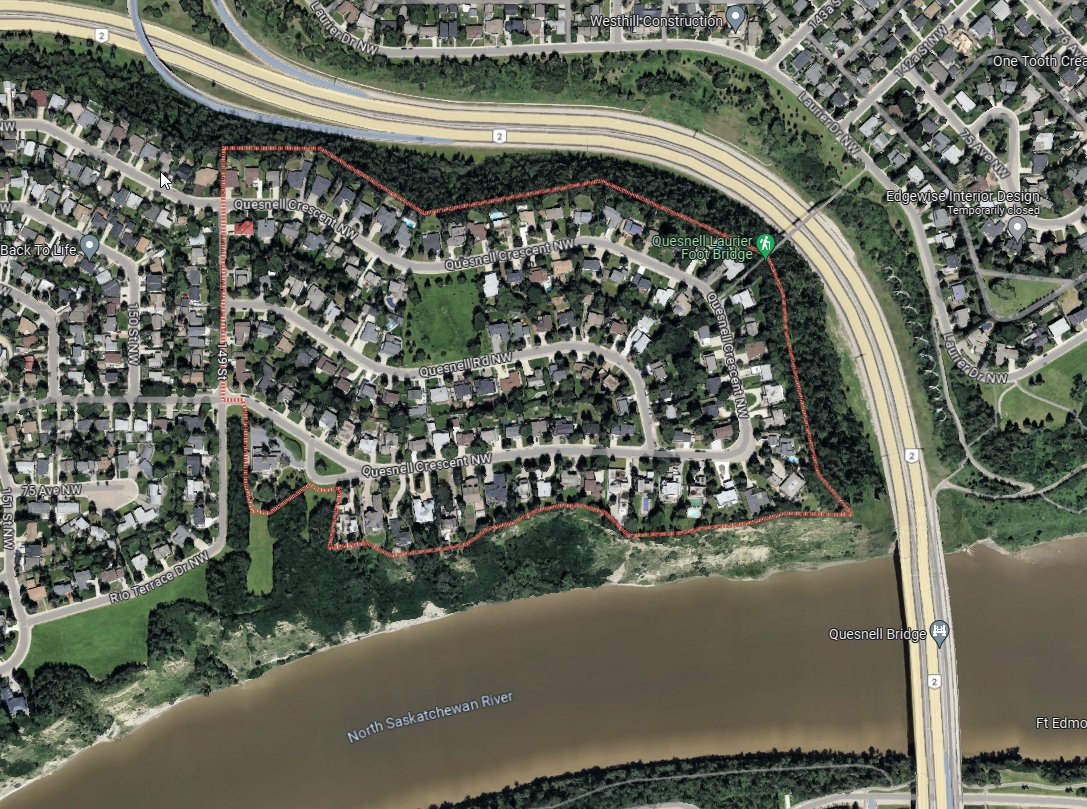
 In the 2019 municipal census, Quesnell Heights, tucked between Whitemud Dr & the river, only had 330 residents in 122 residences -- the smallest population of any completed residential neighbourhood in #yeg. The most populous,
In the 2019 municipal census, Quesnell Heights, tucked between Whitemud Dr & the river, only had 330 residents in 122 residences -- the smallest population of any completed residential neighbourhood in #yeg. The most populous,

 The River Coe drains a beautifully rugged valley in the Scottish Highlands. The Gaelic word for a deep, narrow valley is the origin of the English word "glen" so the community that was established at the mouth of the Coe became known as Glen Coe, or Glencoe.
The River Coe drains a beautifully rugged valley in the Scottish Highlands. The Gaelic word for a deep, narrow valley is the origin of the English word "glen" so the community that was established at the mouth of the Coe became known as Glen Coe, or Glencoe. 

 Spiritual traditions throughout time have established sacred sites: hills, cathedrals, groves, temples, shrines, etc. For the believer, there is something special about a place to leave behind the ordinary world temporarily to commune with the divine.
Spiritual traditions throughout time have established sacred sites: hills, cathedrals, groves, temples, shrines, etc. For the believer, there is something special about a place to leave behind the ordinary world temporarily to commune with the divine. 

 The hall is located 47 km southwest of downtown Edmonton on Township Road 490, commonly known as the Glen Park Road. It is surrounded by good farmland and is outside Edmonton's commuter shed.
The hall is located 47 km southwest of downtown Edmonton on Township Road 490, commonly known as the Glen Park Road. It is surrounded by good farmland and is outside Edmonton's commuter shed. 

 Jean Wallbridge was born in Edmonton in 1912 to an affluent lawyer and his wife. Jean was educated at private schools, in Europe & @VictoriaArts. It's safe to assume that she was one of the few young Edmontonians presented at the royal court in London during the Depression.
Jean Wallbridge was born in Edmonton in 1912 to an affluent lawyer and his wife. Jean was educated at private schools, in Europe & @VictoriaArts. It's safe to assume that she was one of the few young Edmontonians presented at the royal court in London during the Depression. 


 It was originally built in 1953 as a storage garage for Manbro Ltd (was there ever a more testosterone-laden business name?), part of the Manning Lumber companies owned by Percy Manning. At the time Manning Lumber was located between 79 & 80 Aves where the Brooks NOFRILLS now is.
It was originally built in 1953 as a storage garage for Manbro Ltd (was there ever a more testosterone-laden business name?), part of the Manning Lumber companies owned by Percy Manning. At the time Manning Lumber was located between 79 & 80 Aves where the Brooks NOFRILLS now is. 

 Many people are know that Strathcona had a significant German community 100+ yrs ago because aspects of it (e.g. Holy Trinity Lutheran Church, K&K Foodliner) still exist, but downtown Edmonton had one too. Here's a map of German families prior to 1914. sites.ualberta.ca/~german/Albert…
Many people are know that Strathcona had a significant German community 100+ yrs ago because aspects of it (e.g. Holy Trinity Lutheran Church, K&K Foodliner) still exist, but downtown Edmonton had one too. Here's a map of German families prior to 1914. sites.ualberta.ca/~german/Albert… 

https://twitter.com/timquerengesser/status/1618395039356563456The building appears to have been built in 1911 by the Canadian Locomobile Co. Ltd. Just a few years after the first car arrived in Edmonton in 1904, Canadian Locomobile was selling Hupmobiles & Pathfinders in a crowded auto sales market.





https://twitter.com/everylotYEG/status/1610652283259297796At a time before the petrochemical industry, agriculture was the big economic deal in the province, and Arthur was mentioned hundreds of times in Alberta newspapers.




 St. Andrew's Anglican Church was built in 1910 south of Jasper Ave along Alex Taylor Road, where the Valley Vista Apartments are now located. The "little church on the hill" served Anglicans in the Boyle Street neighbourhood. @DioEdm
St. Andrew's Anglican Church was built in 1910 south of Jasper Ave along Alex Taylor Road, where the Valley Vista Apartments are now located. The "little church on the hill" served Anglicans in the Boyle Street neighbourhood. @DioEdm 




 2005: architect James Cheng's concept for a walkable, mixed-use, high-density, transit-oriented urban village that wowed planners and helped #yegcc decide to fund extension of the LRT to the site.
2005: architect James Cheng's concept for a walkable, mixed-use, high-density, transit-oriented urban village that wowed planners and helped #yegcc decide to fund extension of the LRT to the site. 

https://twitter.com/godofgrind/status/1580291102623821824The circle was part of the original design of the 1911 Glenora subdivision, planned as a focal amenity at the intersection of 33 (later 133) Street & Peace Avenue in an area where the other avenues (Athabasca, Mackenzie) were also named after rivers.


 The Oliver neighbourhood has been a focus for Roman Catholics in Edmonton for 140 years. In addition to Saint-Joachim Church and St. Joseph's Basilica, there's the Archbishop's Palace and the General Hospital, which was founded and run by the Grey Nuns.
The Oliver neighbourhood has been a focus for Roman Catholics in Edmonton for 140 years. In addition to Saint-Joachim Church and St. Joseph's Basilica, there's the Archbishop's Palace and the General Hospital, which was founded and run by the Grey Nuns. 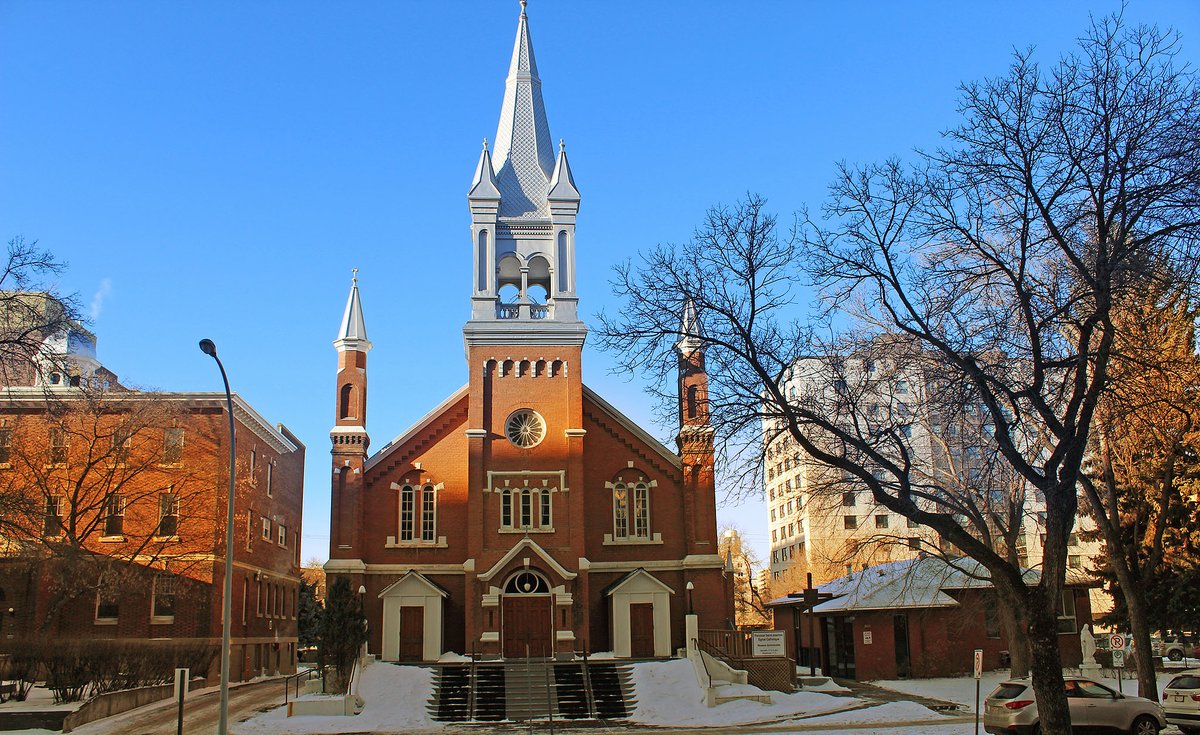


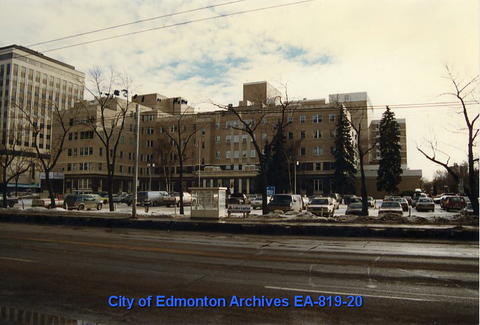


 Cameron Library, opened in 1964 and named after former University Librarian Donald Cameron, was designed to be expanded after its bracketing North and South Labs, shown in this 1965 air photo, were demolished.
Cameron Library, opened in 1964 and named after former University Librarian Donald Cameron, was designed to be expanded after its bracketing North and South Labs, shown in this 1965 air photo, were demolished. 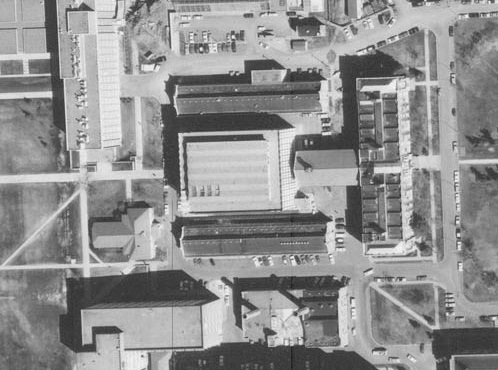

 The pixelated bison is a map connecting Edmonton with St. Paul. Each pixel is a surveyor’s township. The blue line is the North Saskatchewan and the red line is the former @CNRailway Coronado subdivision.
The pixelated bison is a map connecting Edmonton with St. Paul. Each pixel is a surveyor’s township. The blue line is the North Saskatchewan and the red line is the former @CNRailway Coronado subdivision. 

 Before World War I there was a real estate boom in Edmonton. Land owners and investors were bringing dozens of speculative subdivisions to market. One on the south side of the river was Grossdale.
Before World War I there was a real estate boom in Edmonton. Land owners and investors were bringing dozens of speculative subdivisions to market. One on the south side of the river was Grossdale. 



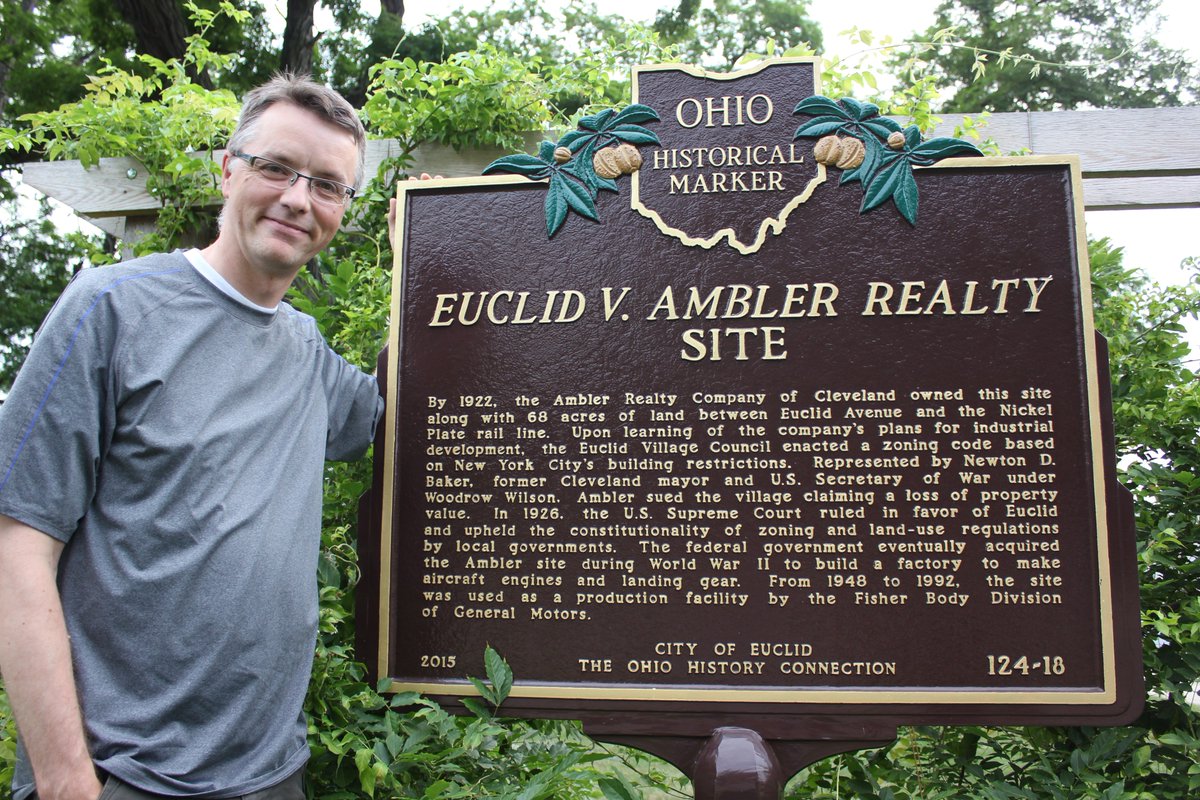
 After the U.S. Civil War, Cleveland, Ohio boomed industrially. Euclid Avenue was the pinnacle of the city's wealth, with a portion of it known as Millionaires' Row. John D. Rockefeller lived along it for years until he decamped to New York. This is another Euclid Avenue home.
After the U.S. Civil War, Cleveland, Ohio boomed industrially. Euclid Avenue was the pinnacle of the city's wealth, with a portion of it known as Millionaires' Row. John D. Rockefeller lived along it for years until he decamped to New York. This is another Euclid Avenue home. 